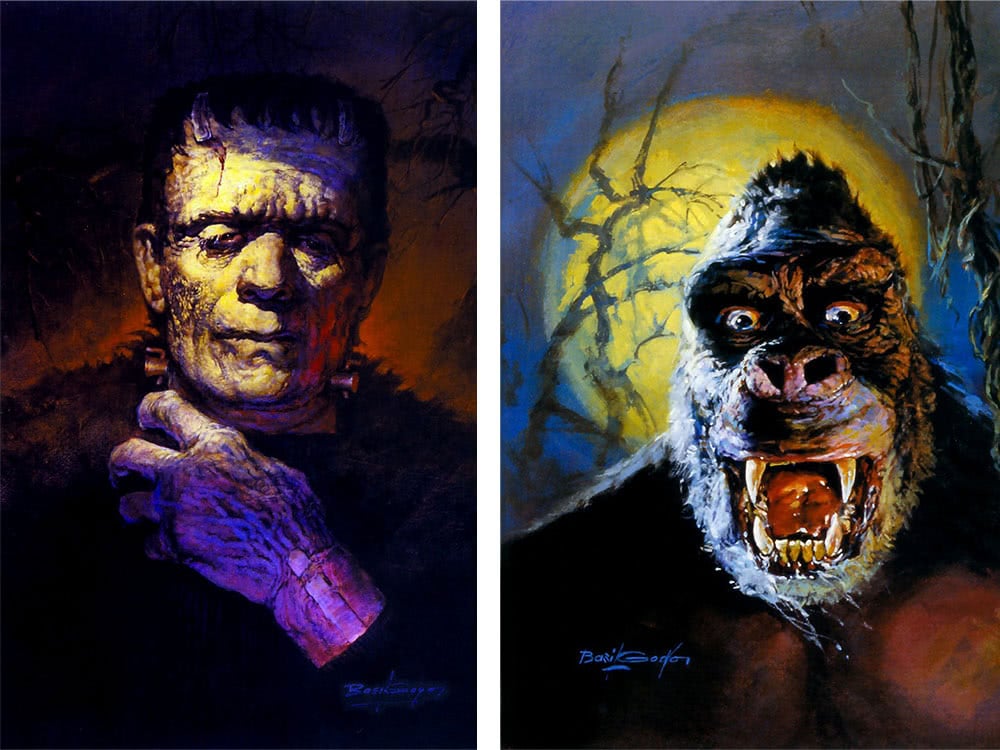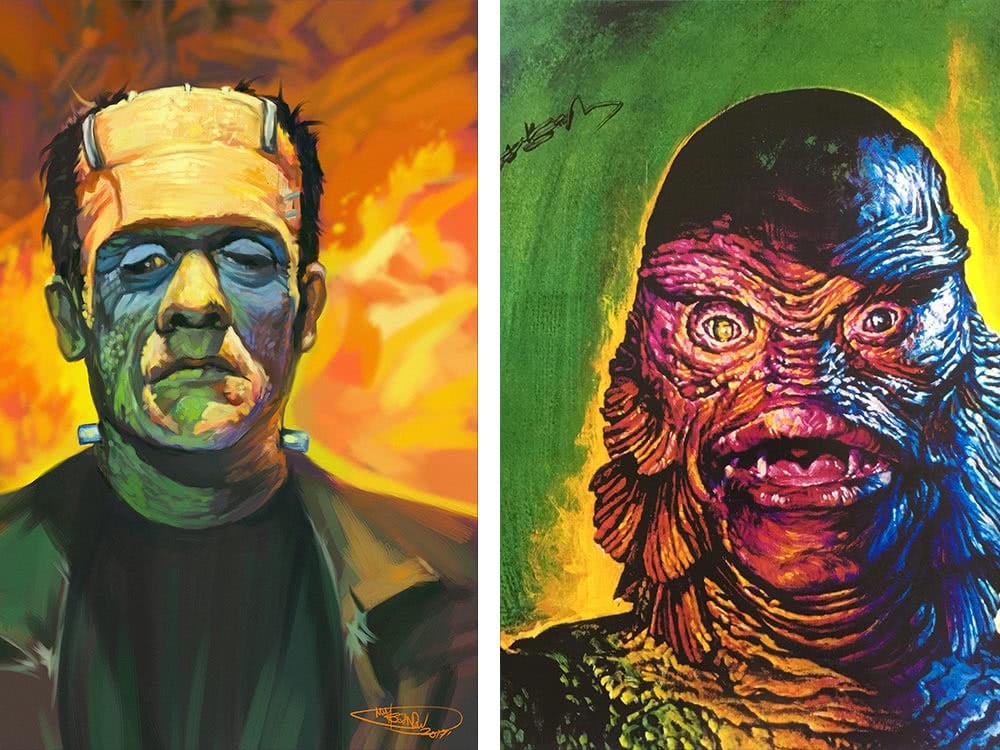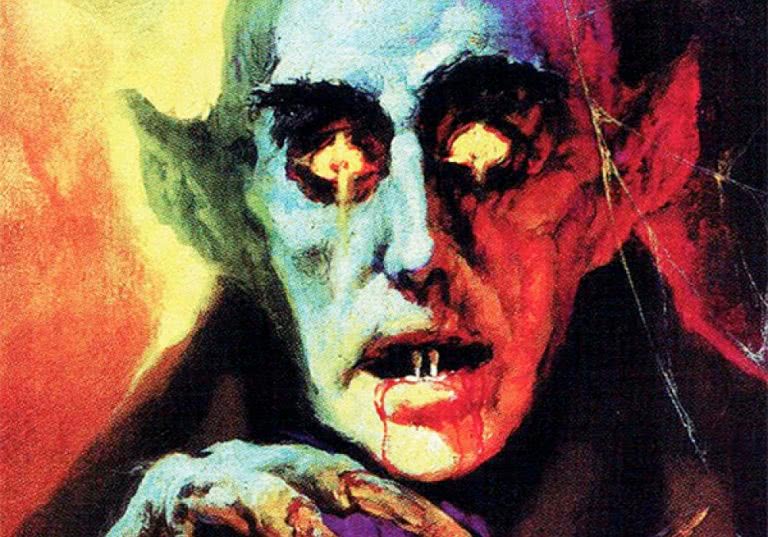The history of horror art can be divided into two distinct phases: before and after Gogos. Such was the impact of Basil Gogos, an Egyptian-born, USA-based illustrator whose colourful work decorated the cover of Famous Monsters Of Filmland magazine for one glorious decade, leaving a mark on the entire artform that is still visible to this day.
Not, mind you, that it was ever Gogos’ intention to get into such a line of work. Sure, he had always wanted to be an illustrator – he was scribbling away on loose paper even as a child – but his initial aims were slightly more prestigious. He spent time at The National School of Design, and New York’s prestigious School of Visual Arts, before eventually studying under Frank J. Reilly, a muralist whose work tipped its hat to French 19th century portraiture.
But at the time, New York rent was expensive, the fine art scene was hermetically sealed, and Gogos was determined to make a paycheque however he could. So when an opportunity came around to illustrate Pursuit, a pulpy Western novel from a virtually unknown author, Gogos took it.

So began one of the most productive phases of Basil Gogos’ career. The New York periodical scene was booming, and Gogos carved himself a space as the premier illustrator for men’s magazines. It was during this time that his still nascent style began to develop. His work from the period shows a fascination with the human form, and he spent hours and hours painting scenes of brawny men at war, or fighting off exotic horrors.
But even then, Gogos was moving against the grain. While his peers settled for strangely neutral, toothless work – the kind of illustrations that get parodied now as the least interesting examples of “boy’s own adventure” style art – Gogos let splashes of surreality move into his work. His use of colour in particular proved inspired – even Gogos’ war zones were fetching messes of reds, yellows, and oranges, and his jungles were like wet, sopping, Cezanne-esque maws.
It was this style that would define Gogos’ work with Monsters Of Filmland, and indeed, the rest of his extraordinary career. He began working with Filmland in the early ’60s; his first illustration for them was of Vincent Price in his House Of Usher phase, his eyes burning and his face a chalky death mask, the background behind him a melange that looked more like a sunset than anything horror fans might have otherwise expected.
Love Music?
Get your daily dose of metal, rock, indie, pop, and everything else in between.

This, indeed, proved to be Gogos’ great unique talent: he understood that monsters have colour. They need not be dusty, black and white wraiths tucked away in the shadows; they can be these bright, oddly beautiful, utterly life-filled creations. It is in this way that Gogos’ legacy can be measured.
After the artist’s incredible decade long-run at Filmland, the game was forever changed: not only did the man inspire an entire generation of illustrators, but his work became the high watermark for the entire artform. It’s hard to imagine, for example, that the nightmares plastered onto every copy of the Goosebumps franchise would exist without Gogos, and his singular creative vision.
Gogos passed away last year at the age 88. But his work is continuing to pervade the culture; to inspire. His monster portraits appear on highly-desired trading cards; his work circulates like a wildfire online; and his imitators pay homage to his work with their own technicolour horrors. Long live monsters. Long live Basil Gogos.

































